Portable Dishwasher Benefits and Top Models for Small Spaces
Portable Dishwasher. Many people choose portable dishwashers as a practical alternative to built-in models when a permanent installation is not possible. They provide efficient cleaning power and often include multiple wash cycles similar to standard dishwashers
HOME COMFORT
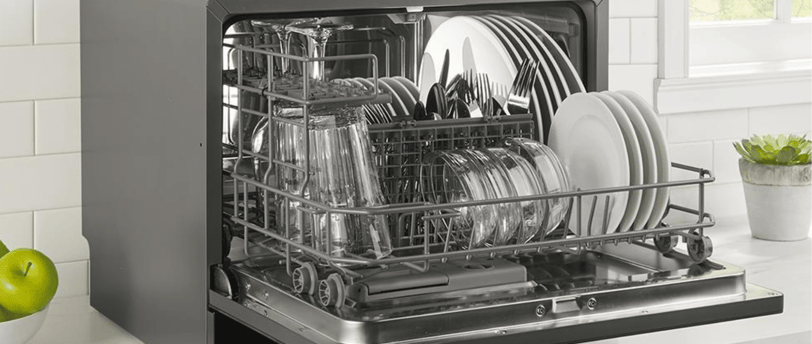

A portable dishwasher is a compact appliance designed for easy movement and installation without permanent hookups. It offers the convenience of a full dishwasher for those with limited space or rental accommodations. It connects directly to a kitchen faucet and can be stored away when not in use, making it ideal for small kitchens or temporary setups.
Many people choose portable dishwashers as a practical alternative to built-in models when a permanent installation is not possible. They provide efficient cleaning power and often include multiple wash cycles similar to standard dishwashers.
Understanding the key features and setup options can help users decide if a portable dishwasher meets their needs. This article explores the benefits and considerations to help make an informed choice.
Types of Portable Dishwashers
Types of Portable Dishwashers
Portable dishwashers come in different designs that vary by size, installation type, and capacity. Each style suits distinct space needs and user preferences, from small kitchens to larger households.
Countertop Models
Countertop portable dishwashers are compact and fit on kitchen counters, making them ideal for small spaces. They usually connect directly to the kitchen faucet and drain into the sink.
These units typically hold between 6 to 8 place settings. They consume less water and energy compared to larger models but have limited capacity.
Users appreciate their ease of use and quick setup without permanent installation. However, they may require clearing counter space, and cycle times can be longer with smaller volumes.
Freestanding Units
Freestanding portable dishwashers resemble standard dishwashers but have wheels for mobility. They connect to faucets when in use and can be stored away when not needed.
Most freestanding models accommodate 10 to 14 place settings. They include more features such as multiple wash cycles, adjustable racks, and heated drying.
They suit medium to large households needing full dishwasher capability without built-in installation. The units often require floor space similar to traditional dishwashers.
Convertible Options
Convertible portable dishwashers offer flexibility to be used as countertop or freestanding units. They come with accessories or configurations that allow easy switching.
These models combine the compact design of countertop units with the capacity of freestanding types. Users can adapt based on kitchen size or mobility needs.
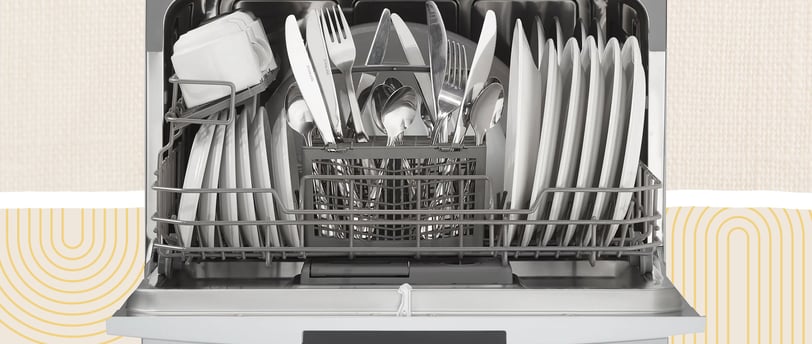

Convertible units tend to cost more but provide versatility. They are suitable for users who move frequently or require temporary dishwasher solutions.
Key Features to Consider
Choosing a portable dishwasher requires attention to its capacity, size, and how efficiently it uses resources. Noise levels and available wash cycle options further affect convenience and performance in daily use.
Capacity and Size
The capacity of a portable dishwasher is usually measured in place settings. Models typically range from 6 to 12 place settings. A smaller capacity suits singles or couples, while larger families need more space.
Size directly impacts where it can be placed. Many units are about 17-22 inches wide, designed to fit on countertops or small floor spaces. It is important to measure the available area to ensure a proper fit.
Portability depends on weight and whether the unit has wheels or handles. Heavier models with wheels make moving easier but may occupy more space.
Water and Energy Efficiency
Water and energy efficiency affect operating costs and environmental impact. Look for dishwashers with Energy Star labels or similar certifications.
Most portable dishwashers use around 3 to 5 gallons of water per cycle, less than hand washing in many cases. Models with efficient pumps and sensors adjust water use based on load size.
Energy-efficient options use less electricity, often requiring 1200 to 1500 watts per cycle. Lower wattage models might save money but could take longer to complete cycles.
Noise Levels
Noise ratings are measured in decibels (dB). Portable dishwashers typically range from 40 to 60 dB. Models under 50 dB are considered quiet and suitable for open kitchens or small living areas.
Some dishwashers include noise-reduction features like insulated panels or quieter motors. Noise level can affect usability, especially in small apartments or homes where the kitchen is near living spaces.
Consumers should check decibel ratings before purchasing if noise is a priority.
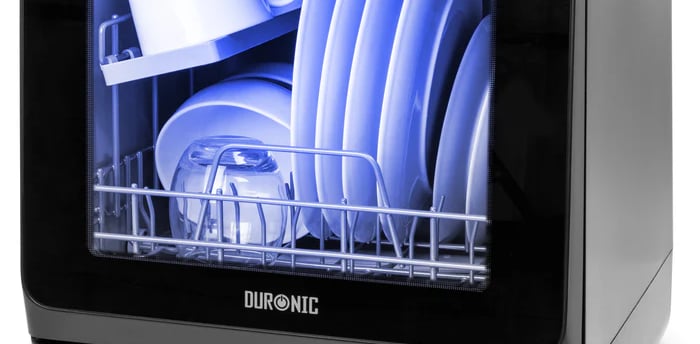

Wash Cycle Options
Wash cycle variety affects cleaning performance and flexibility. Common cycles include Normal, Heavy, Eco, and Quick Wash.
Heavy cycles target baked-on or dried food using higher temperatures and longer durations. Eco cycles reduce water and energy use but take more time.
Some models offer sanitize options to kill bacteria, useful for baby bottles or cutting boards. Delay start settings provide convenience for off-peak operation.
Choosing a dishwasher with multiple wash settings allows better customization for different load types.
Installation and Maintenance
Portable dishwashers require specific conditions for proper setup and ongoing care to function efficiently. Users must ensure water access, electrical compatibility, and regular cleaning to avoid operational problems. Addressing common issues promptly can extend the appliance's lifespan.
Setup Requirements
Portable dishwashers need a standard 120V electrical outlet and a nearby water source, usually a kitchen faucet compatible with a hose adapter. The unit should be placed on a flat, stable surface to prevent vibration during operation.
Connecting the water supply involves attaching the hose securely to the faucet, often requiring an adapter included with the dishwasher. Drainage typically runs through a secondary hose into the sink. Ensuring all connections are tight prevents leaks.
Users should check the user manual for any specific space clearances behind the unit to allow ventilation. Most portable dishwashers do not require permanent plumbing modifications, which makes the initial setup straightforward.


Routine Cleaning
Cleaning the filter regularly is critical to maintain washing efficiency. The filter can usually be found at the bottom interior and should be rinsed under running water every week or after heavy use.
Wiping down the door seals with a damp cloth removes food particles and prevents mold buildup. Using dishwasher cleaner tablets once a month helps remove lime scale and detergent residue inside the machine.
It is important to keep the drain hose clear of obstructions to avoid water drainage issues. Inspecting the spray arms for clogs and cleaning their holes with a toothpick or brush enhances water flow.
Troubleshooting Common Issues
If the dishwasher fails to fill with water, the faucet adapter or inlet hose may be blocked or improperly attached. Checking these connections and the water pressure can resolve the problem.
Leaks often occur due to loose hose fittings or worn door seals. Tightening hose clamps and replacing damaged seals usually stops leaks.
When dishes come out dirty, the filter and spray arms should be cleaned. Overloading or improper loading of dishes can also reduce cleaning effectiveness. Resetting the dishwasher or consulting the error codes displayed can address other mechanical or electronic faults.
Top Uses and Benefits
Portable dishwashers enhance convenience in limited spaces and adapt to different living conditions. They offer practical solutions for varied household needs and event settings.
Space-Saving Advantages
Portable dishwashers are ideal for small kitchens with limited counter or cabinet space. Their compact design fits into tight areas, freeing up valuable room typically occupied by built-in appliances.
They often come with wheels, allowing users to store them away when not in use. This mobility helps maintain kitchen organization without sacrificing dishwashing capabilities.
Additionally, their smaller size means they consume less water and energy than standard dishwashers. This makes them suitable for eco-conscious users looking to reduce utility costs.
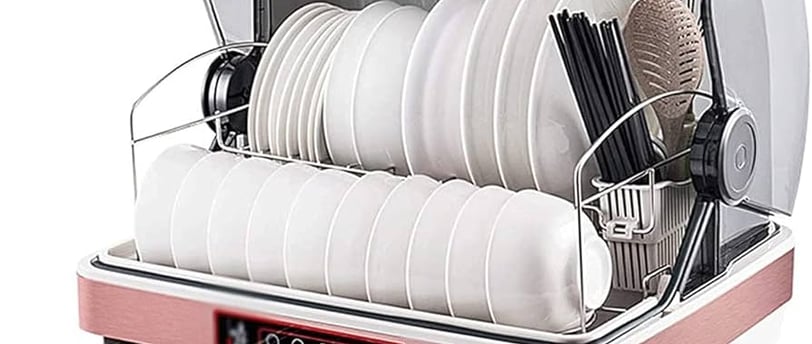

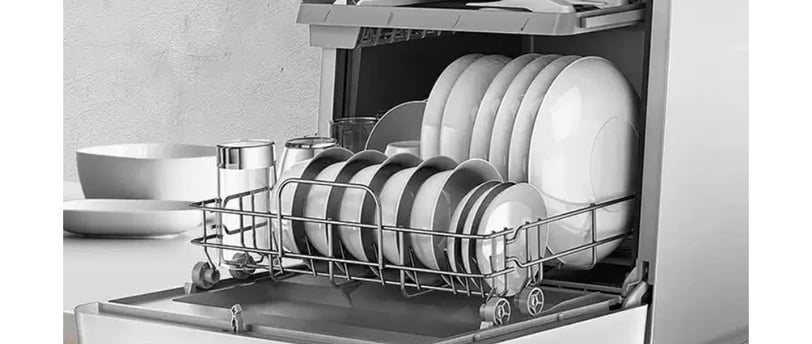

Flexibility for Renters
Renters benefit from portable dishwashers because they require no permanent installation. This feature avoids property modifications, which landlords often prohibit.
Connections usually fit standard faucets, allowing easy setup and removal. Tenants can bring the dishwasher along when moving, maintaining consistent dishwashing convenience.
This flexibility also supports those living in temporary or transitional housing. It offers a home-like amenity without the commitment or expense of built-in appliances.
Portability for Outdoor Events
Portable dishwashers can be transported to outdoor gatherings, such as camping trips and backyard parties. They provide a hygienic way to clean dishes where plumbing is available.
They reduce the need for disposable dishware, supporting environmental sustainability. Quick setup allows users to manage cleanup efficiently after meals.
Their durability and compactness facilitate use in varying conditions. This portability makes them valuable for catering or mobile food service scenarios.
